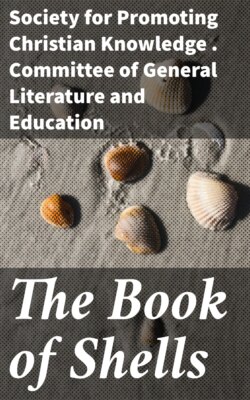Читать книгу The Book of Shells - Society for Promoting Christian Knowledge . Committee of General Literature and Education - Страница 8
На сайте Литреса книга снята с продажи.
The Cuttle Fish, (Sepia officinalis.)
ОглавлениеThe Cuttle Fish, of which there are many different species, is a native of all the temperate and tropical seas. Its body is, in general, of an irregular oval shape, and of a jelly-like substance, and usually covered with a coarse skin, having the appearance of leather. Unlike all other inhabitants of the water which are without a backbone, the Sepia possesses two large and brilliant eyes, covered with a hard transparent substance.
The Cuttle Fish, figured in the engraving, is furnished in front with eight arms or feelers, with which it grapples with its enemy, or conveys its prey to its mouth. These arms are most curiously constructed, and afford it ample means of defence; they possess in themselves a strong muscular power, and this is materially assisted by numerous cups or suckers, placed along the whole of their inner surface, with which they fasten themselves to any object they come in contact with. These feelers appear to be also endued with some peculiar power, of a galvanic nature; since the pain which they inflict does not cease for a long time after the removal of the animal, leaving a kind of stinging sensation, like that produced by nettles, which remains for many hours, and is followed by a troublesome irritation and itching.
THE CUTTLE FISH.
BEAK OF A
CEPHALOPOD.
The size to which this creature grows has been variously stated; and, although evidently exaggerated by some authors, there can be no doubt that it attains a very considerable magnitude. When attacked in its own element, it has been known, even in the seas of temperate latitudes, capable of overcoming a powerful mastiff. The jaws of all this tribe are, likewise, extremely strong, formed like the beak of a parrot, and very hard. In addition to these means of defence, it possesses within its body a bladder, containing an inky-coloured fluid, which it has the power of throwing out at will, and, by thus discolouring the water, it escapes the pursuit of its enemies. This inky liquid, when dried, forms a very valuable colour, used by artists, and called, after the animal, Sepia. The eggs of the female are of an oval form, and joined to each other in clusters. They are of the size of filberts, of a black colour, and commonly known by the name of Sea Grapes. They are found attached to sea-weed, rocks, and other marine substances.
The Cuttle Fish generally remains with its body in some hole in a rock, while its arms are extended in every direction, to seize the wanderer that may chance to pass its place of ambush. Its appetite is voracious, and it seizes as its prey every living thing that it has the power to conquer.
The species figured in the engraving is very common on the English coasts, and the bone which is enclosed in its body is frequently found on the sands; it is a well-known substance, and much employed in the manufacture of tooth-powder. This bone, which, with the exception of the jaws, is the only solid part in the Sepia, differs in shape in the different species, but is always somewhat oval in its form, though varying considerably in texture.
